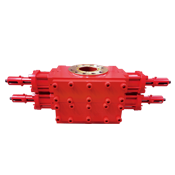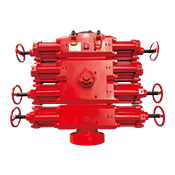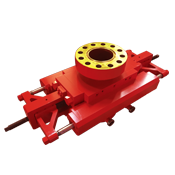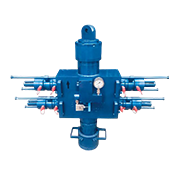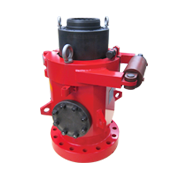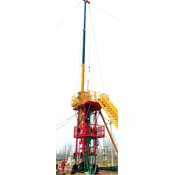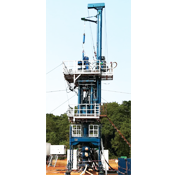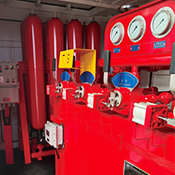Ensuring Safety in High-Pressure Farming Environments: The Role of UM Type Single Ram Blowout Preventers
2024-10-18
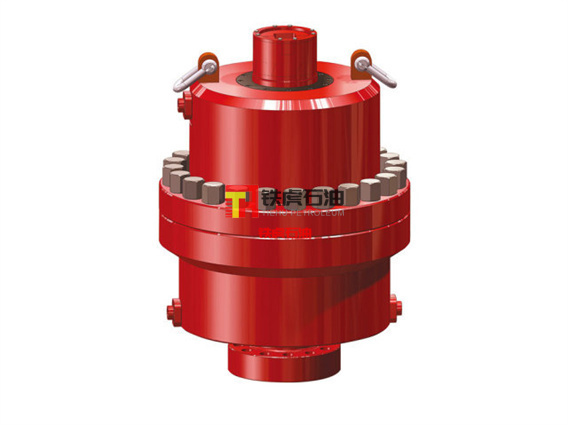
How UM Type Single Ram Blowout Preventers Ensure Safety in High-Pressure Farming Environments
Table of Contents
1. Introduction to Blowout Preventers in Agriculture
2. Understanding UM Type Single Ram Blowout Preventers
2.1. Key Features and Specifications
2.2. Comparison with Other Types of Blowout Preventers
3. Importance of Safety in High-Pressure Farming
3.1. Risks Associated with High-Pressure Operations
3.2. Regulatory Standards and Compliance
4. How UM Type Single Ram Blowout Preventers Work
4.1. Mechanism of Action
4.2. Installation and Maintenance Procedures
5. Benefits of UM Type Single Ram Blowout Preventers
5.1. Enhanced Safety Protocols
5.2. Increased Operational Efficiency
6. Case Studies: Successful Implementation
6.1. Real-World Examples
6.2. Lessons Learned
7. Future Trends in Blowout Prevention Technology
8. Frequently Asked Questions (FAQs)
9. Conclusion
1. Introduction to Blowout Preventers in Agriculture
In the rapidly evolving landscape of **agricultural technology**, safety remains a paramount concern, particularly in high-pressure farming environments. The use of blowout preventers (BOPs) has become essential for safeguarding machinery and personnel during agricultural operations, especially in sectors that require intense pressure management. As the demand for efficient farming techniques grows, understanding the role of **UM Type Single Ram Blowout Preventers** is crucial in mitigating risks and enhancing safety protocols.
2. Understanding UM Type Single Ram Blowout Preventers
UM Type Single Ram Blowout Preventers are specialized devices designed to maintain control over the high-pressure systems prevalent in agricultural settings. These BOPs serve as a critical line of defense against blowouts—uncontrolled releases of pressure that can lead to catastrophic failures and hazardous conditions.
2.1. Key Features and Specifications
The UM Type Single Ram Blowout Preventer is characterized by several key features that make it particularly suited for high-pressure agricultural applications:
- **Single Ram Design**: This design allows for quick sealing in the event of a blowout, minimizing response time and potential damage.
- **Robust Construction**: Built from high-grade materials, these BOPs are engineered to withstand extreme pressures and varying environmental conditions.
- **User-Friendly Interface**: Operators can easily engage and disengage the system, ensuring efficient management during critical operations.
- **Versatile Compatibility**: The UM Type can be integrated with various farming equipment, enhancing its utility across different agricultural applications.
2.2. Comparison with Other Types of Blowout Preventers
While there are several types of blowout preventers available, the UM Type Single Ram BOP distinguishes itself through its unique features. Unlike **double ram BOPs**, which offer redundancy, single ram systems are often lighter and easier to manage, making them ideal for field operations where space and weight can be limiting factors.
3. Importance of Safety in High-Pressure Farming
In high-pressure farming environments, safety cannot be overstated. The potential for equipment failure, accidents, and injuries necessitates stringent safety measures and equipment like UM Type Single Ram Blowout Preventers.
3.1. Risks Associated with High-Pressure Operations
High-pressure farming operations often involve significant risks, including:
- **Pressure Surges**: Sudden increases in pressure can lead to equipment failure and blowouts.
- **Environmental Hazards**: Released materials can cause environmental contamination, harming local ecosystems.
- **Worker Safety**: Uncontrolled pressure releases pose severe risks to operator safety and well-being.
3.2. Regulatory Standards and Compliance
Compliance with agricultural safety regulations is critical for any farming operation. Regulatory bodies mandate the use of approved safety equipment, such as blowout preventers, to ensure that operators maintain a safe working environment. Non-compliance can result in penalties, increased insurance costs, and potential shutdowns.
4. How UM Type Single Ram Blowout Preventers Work
Understanding the operational mechanics of UM Type Single Ram Blowout Preventers is vital for effective use in high-pressure environments.
4.1. Mechanism of Action
The UM Type BOP functions by creating a seal that prevents fluid flow through the system during a blowout. When a pressure surge is detected, the operator engages the BOP, which activates the ram mechanism. This action compresses the sealing element against the pipe, effectively shutting off the flow of fluids and mitigating the risk of a blowout.
4.2. Installation and Maintenance Procedures
Correct installation and routine maintenance are essential for the effective performance of blowout preventers. Operators must adhere to the following guidelines:
- **Installation**: Position the BOP according to manufacturer specifications, ensuring correct alignment with the machinery it serves.
- **Regular Inspections**: Conduct routine checks for wear and tear, ensuring that seals and mechanical components are functioning correctly.
- **Testing**: Perform pressure tests periodically to confirm the BOP's integrity and reliability.
5. Benefits of UM Type Single Ram Blowout Preventers
The implementation of UM Type Single Ram Blowout Preventers offers numerous advantages that significantly enhance safety and operational efficacy in high-pressure farming environments.
5.1. Enhanced Safety Protocols
With the ability to quickly respond to pressure surges, UM Type BOPs provide an essential layer of safety. Their rapid sealing capability minimizes the chances of accidents, protecting both equipment and personnel.
5.2. Increased Operational Efficiency
By preventing blowouts and minimizing downtime, these blowout preventers contribute to smoother operations. This efficiency translates to better yields and reduced operational costs, making them a valuable asset in high-pressure farming.
6. Case Studies: Successful Implementation
Examining real-world applications of UM Type Single Ram Blowout Preventers can provide insights into their effectiveness and benefits.
6.1. Real-World Examples
In several agricultural operations, the introduction of UM Type BOPs has resulted in a notable decrease in blowout incidents. For instance, a large-scale farming operation in the Midwest reported a 40% reduction in pressure-related failures after integrating these systems into their machinery fleet.
6.2. Lessons Learned
Key takeaways from successful implementations include the importance of operator training on BOP functionality and the necessity of routine maintenance checks to ensure optimal performance.
7. Future Trends in Blowout Prevention Technology
The agricultural sector continues to evolve, and so does the technology surrounding blowout prevention. Future trends may include:
- **Smart Technology Integration**: The incorporation of IoT devices for real-time monitoring and alerts related to pressure levels.
- **Advanced Materials**: Research into innovative materials that improve the durability and functionality of blowout preventers under extreme conditions.
- **Automation**: The development of automated systems that can engage blowout preventers without manual intervention, further enhancing safety.
8. Frequently Asked Questions (FAQs)
Q1: What is the primary function of a blowout preventer?
A1: The primary function of a blowout preventer is to prevent uncontrolled pressure release during agricultural operations, enhancing safety and protecting equipment and personnel.
Q2: How often should blowout preventers be inspected?
A2: It is recommended to inspect blowout preventers regularly, ideally every few months or as per operational guidelines, to ensure they are functioning correctly.
Q3: Are there specific regulations for blowout preventers in agriculture?
A3: Yes, various regulatory bodies have established guidelines and standards for the use of blowout preventers in agricultural settings to ensure safety compliance.
Q4: Can UM Type Single Ram Blowout Preventers be used with all types of farming machinery?
A4: While UM Type BOPs are versatile, it's essential to check compatibility with specific machinery models. Always consult the manufacturer for recommendations.
Q5: What are the benefits of using a single ram versus a double ram blowout preventer?
A5: Single ram blowout preventers are typically lighter and easier to manage, making them ideal for operations where space and weight are concerns. However, double ram units provide redundancy, which may be beneficial in some scenarios.
9. Conclusion
In high-pressure farming environments, the implementation of **UM Type Single Ram Blowout Preventers** is critical for maintaining safety and operational efficiency. These devices not only mitigate the risks associated with pressure surges but also enhance overall productivity in agricultural operations. By understanding their functionality, adhering to maintenance protocols, and staying informed about industry advancements, farmers can ensure a safer working environment for their operations. As technology continues to evolve, the role of blowout preventers in agriculture will remain vital, paving the way for safer and more efficient farming practices.
PREVIOUS:
Related News
Contact Us
Mailbox:
tiehu@tiehupetro.com
Telephone:
86-317-2616808
Address:
Yanling Industrial Zone, Renqiu City, Cangzhou City, Hebei Province, China


